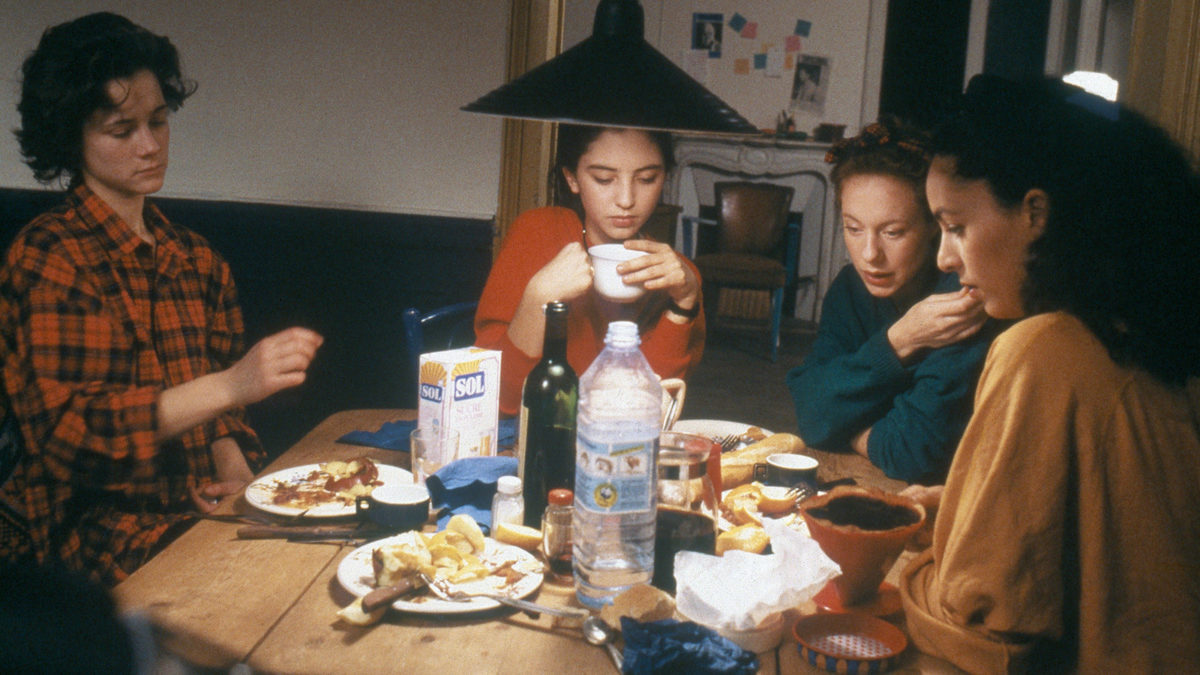In the small world of Jacques Rivette aficionados and experts, it is commonly recognised that the best way of discussing his films is to use a certain set of words and expressions such as “mise en abime”, “self-reflexivity”, “dialectic”, “collective authorship”, “secrecy”, “incompleteness”, “mysticism”, “improvisation”, among other dreadfully specific concepts. No wonder films like Out 1: noli me tangere (1971) or Le Pont du Nord (1981) may put some people off, given the level of specialisation they seem to entail… And yet, Rivette himself didn’t need to have all the keys to understanding a movie when expanding his cinephile culture on the seats of the Paris Cinémathèque.
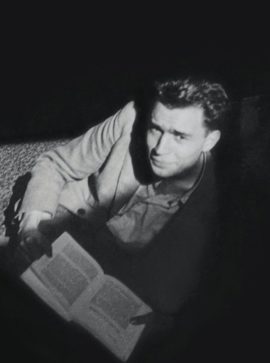
It has been widely reported that he and his Cahiers du Cinéma pals—“grand Momo”, François, Claude and Jean-Luc—didn’t have access to French subtitles when discovering American cinema’s great classics. They happily admitted that the appreciation of a good film shouldn’t require an exhaustive attention to the dialogue on behalf of the (increasingly international) public. Quite the contrary, Rivette was convinced that masterpieces should present themselves to the world in an “obvious” manner. When seeing, for instance, John Wayne walk towards Montgomery Clift in Red River (1948), Rivette didn’t particularly care about what was happening inside a character’s mind. Rather, his entire focus went to the exterior appearances of a scene; to Hawks’ deployment of time and space; to the “precision of each step”; to “the clear pace of [an actor’s] demeanour and gunshot”Rivette, J. (1953, May). ‘Génie de Howard Hawks’. Cahiers du Cinéma, 23, 16–23. He agreed with Éric Rohmer on the principle that a glimpse of the universe should fit inside a movie, through a mix of tragic and comedic elements; impressions of fate and free will; reality and dreams; truth and lies… In short, a dialectic system that allowed filmmakers to find a classical balance; a fair view—neither too cynical nor too pathetic—of the world.
While one can easily get trapped in vague and obscure discourses which solely focus on Rivette’s taste for experimentation, avant-gardist methods and eccentric plots, such considerations would not do credit to the completeness of his character. For indeed, Rivette learnt to understand and film modernity through a classical framework. As I have demonstrated elsewhere, self-referentiality, in the case of Rivette (as well as that of Rohmer and Godard for that matter), cannot be conceived as autobiographical traces that one could recognise as the film goes by. Surely, the knowledge of intimate details such as the friendship that linked him to some recurring actresses, such as Bulle Ogier and the late Hermine Karagheuz, may take on a documentary value, but it will certainly not help differentiate Rivette from a variety of directors who also picked the leading roles from a well-known repertoire of friends and even lovers (think of Claude Chabrol or François Truffaut). The “self” in Rivettean cinema is to be appreciated in the representation of the director’s most fundamental beliefs: the world is not a chaotic one, but one of unity, in which every single action is connected to a profound and superior sigh.
To understand this premise, it can be useful to think of Rivette’s cinema as a living and moving organism, as opposed to automata occasionally brought out of a dusty attic. Unlike the majority of movies, which require spectators to witness the lives of fictional characters, his films are the ones that infiltrate the spectator’s universe and add meanings to it with every new viewing. In fact, we usually tend to return to a particular movie to discover aspects that we might have overlooked during a first screening, or to have a greater comprehension of the director’s aesthetic choices, hence improving our interpretation of the work itself. Rare are the works, however, which are truthfully turned towards everything that is exterior to them. Rivette is part of these few geniuses who, in the same way as Jean Renoir, let the world speak for itself while taking on the deceptive appearance of a closed-doors filming session. Through the example of La Bande des quatre (Gang of Four, 1989), I aim to demonstrate that we, the viewers, are not the ones watching Rivette at work, but it is Rivette who designed a cinematic system that enables him to watch over us from the Beyond, through contemporary considerations on the place of women, money and ideals which attest to his overwhelmingly modern spirit.
It is no accident that Jacques Rivette chose La Double Inconstance (1723)—a comedy play by Marivaux—as the central activity around which Anna, Claude, Cécile, Joyce and Lucia, among other actresses-to-be congregate in this near-three-hours-long feature film. The Comédie Italienne, which became closely associated with Marivaux in the eighteenth century, modernised French theatre by introducing female comedians on stage, as well as interrogating notions of fixed identities through plots involving cross-dressing (see also Le Jeu de l’amour et du hazard [1730] and Le Prince travesti [1724]). The main difference between Marivaux’s troupe and the one led by Constance Dumas (Bulle Ogier) is that the latter is a female-only group. At the end of the class, the newcomer Lucia (Ines de Medeiros) interrogates her fellow comedians about the absence of men. The androgynous Claude (Laurence Côte) replies with her honest opinion: “I think it’s cool. It means we get to play male characters.” As the film unfolds, the girls successively take on different roles on a rotating basis—Sylvia, the Prince, Harlequin, Flaminia, Lisette—while wearing different skirts, dresses, capris, changing colourful sweaters and distinctive hairstyles.
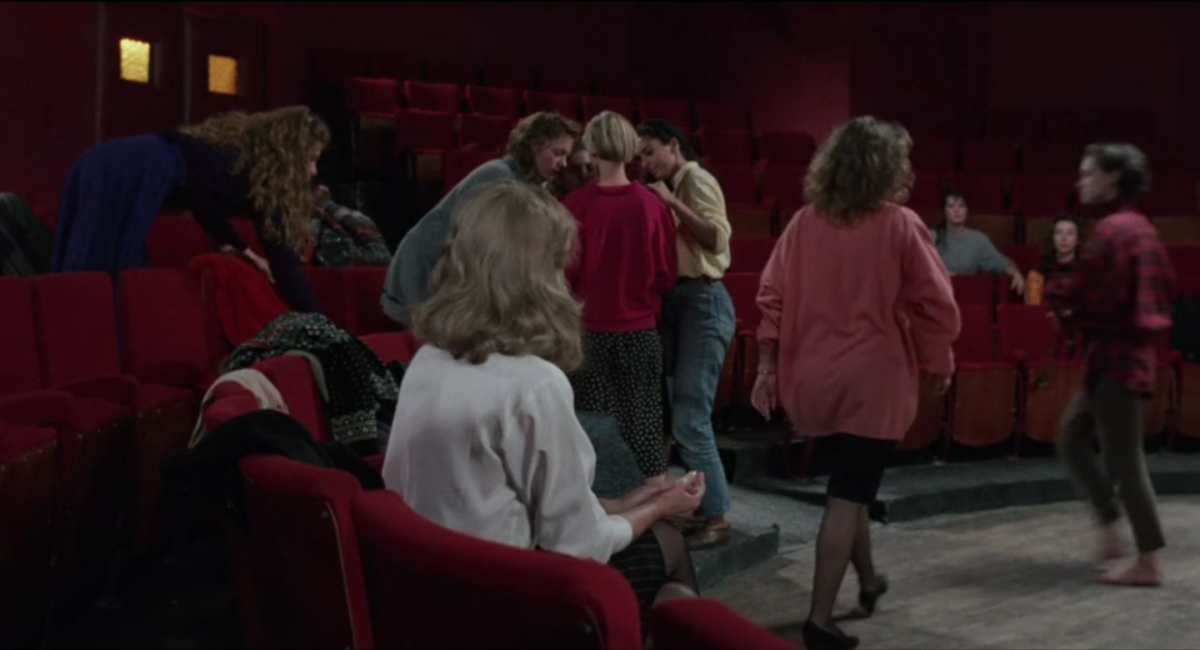
Behind the scenes of Rivette’s behind-the-scenes rehearsals, I imagine Rohmer corroborate, for the umpteenth time in forty years: “see, no need to repudiate ancient playwrights to be modern” with an approving glance towards the girls. Indeed, the marivaudesque themes of the volatile nature of romantic feelings, the dangers of arranged marriages and social masks and games permeate every single subplot, such as when Lucia explains the reason why she left her family home in Portugal: “I will never return. I made a scandal. I didn’t want to marry my fiancé.” The spectator then realises that the flask she is hiding in her bedroom contains the remaining poison through which she almost committed suicide. Moreover, her roommate Claude appears to be looking for a way out of her infatuation with her father’s ex-girlfriend, by quickly jumping into a relationship with a man who mistakes her for her friend Cécile (Nathalie Richard) and introduces himself as Thomas Derville (his surname is a direct reference to Honoré de Balzac’s most famous lawyer “Maître Derville”). By that point, those who have read their classics have also realised that the so-called Thomas alternatively goes by the Balzacian names of Henri de Marsay and Lucien (de Rubempré) when flirting with Claude’s other two roommates, Anna (Fejria Deliba) and Joyce (Bernadette Giraud).
In Gang of Four, it is no longer men who hold the authority on the stage of the theatre. With the help of his actresses, Rivette flips the world upside down: just like in Céline et Julie vont en bateau (1974), Duelle (1976) and Noroît (1976), women are in charge of their own stories and dominate the screen. Male actors are seldom present; either they take on the appearance of predators, like when a gang of men is about to assault Anna, or they take the form of a scheming and intrusive character like Thomas (aka Henri, aka Lucien), who is obsessed with trespassing on the girls’ Montfermeil pavilion. Their comings and goings between the Paris theatre scene and their suburban home are repetitive trajectories which not only evoke the group’s commitment to their artistic careers but also show individual moments of doubt, confusion and even times when some of them head down the wrong track. This is the case for Cécile who starts vanishing as soon as she leaves the shared house for a new life with her boyfriend. Her mood progressively deteriorates and her acting sounds increasingly tragic, despite rehearsing a comedy. Through Thomas’ recurring interference amidst an exclusively female environment, Rivette easily leads us to believe that men are responsible for the pending misfortune.
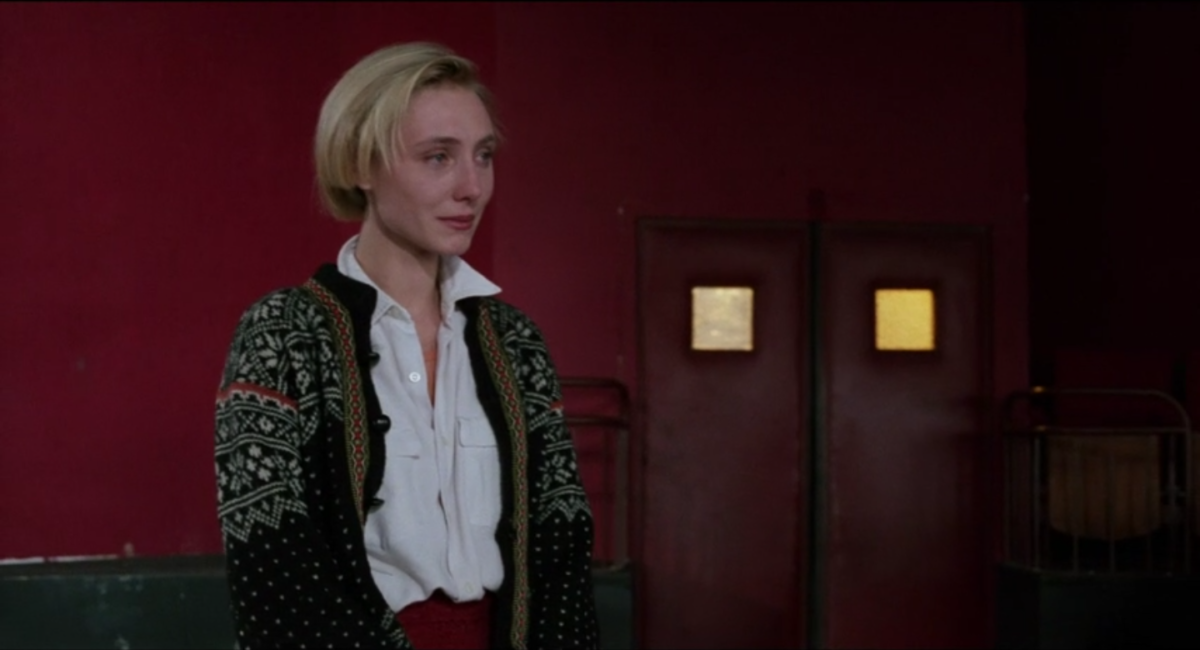
As far as money is concerned, Rivette was the least profitable filmmaker of the Nouvelle Vague and was therefore well aware of the financial struggles any aspiring artist, journalist or novelist has to endure to make a living out of their passion—especially in Paris. Although the gang of four lives in an old two-storey house with a gothic atmosphere and a large leafy garden, they all seem to understand the cost of their lifestyle. Rather than presenting the women as privileged beings disconnected from economic issues, Rivette offers glimpses of their personal relationship to money. We know, for instance, that Anna works as a photographer to pay her bills, that Claude seems to have a frosty relationship with her wealthy dad, that Lucia doesn’t own many things (besides a rug and a poster of Raphael’s St. George and the Dragon), that Joyce once worked as a stretcher bearer, and that Cécile is involved in some dodgy dealings. Rivette even dedicates an entire scene on the cost of Constance Dumas’ acting class through a dialogue between the teacher and one of her candidates. When the latter asks her whether she can pay the course fees at a later date, Constance replies: “Come back to see me when you have enough money. I ask for total commitment.”
In this scene, the public transitions from the world of Commedia dell’Arte to that of Balzac’s Comédie Humaine, wherein money is the ever-present and dark force through which the crux of the plot occurs and unravels. As though by magic, we are not surprised to move from theatrical dialogues to more realistic conversations on Frenhofer’s stolen painting, worth an outstanding amount of money. Against a background of a black market where art collectors collude with thieves, the young Claude listens to Thomas describe the dangers Cécile is putting herself in everyday, by hanging out with the wrong people. For a Balzacian like myself, everything becomes clearer: we have encountered Eugène de Rastignac under the appearance of Claude, from the top of a modern building—in lieu of the heights of Père Lachaise Cemetery (see Père Goriot). As a matter of fact, the actress Laurence Côte shares striking similarities with Balzac’s most famous character: they both have youth, a pale complexion, dark hair and blue eyes, and stare at a cold landscape of Paris. Like Eugène, Claude also carries indignation, as well as a thirst for life, no matter how hazardous love turns out to be. Although Thomas later objectifies her by comparing her bare foot to La Belle Noiseuse’s (Frenhofer’s lost masterpiece), she is actually the opposite of the muse: Claude has itchy feet, she cannot stand still. We continuously see her moving, jumping, squirming, swirling, grinning, laughing and singing popular French songs which, taken out of their context, sound like a feminist anthem: “I don’t want a prince tralalalalalalala.”
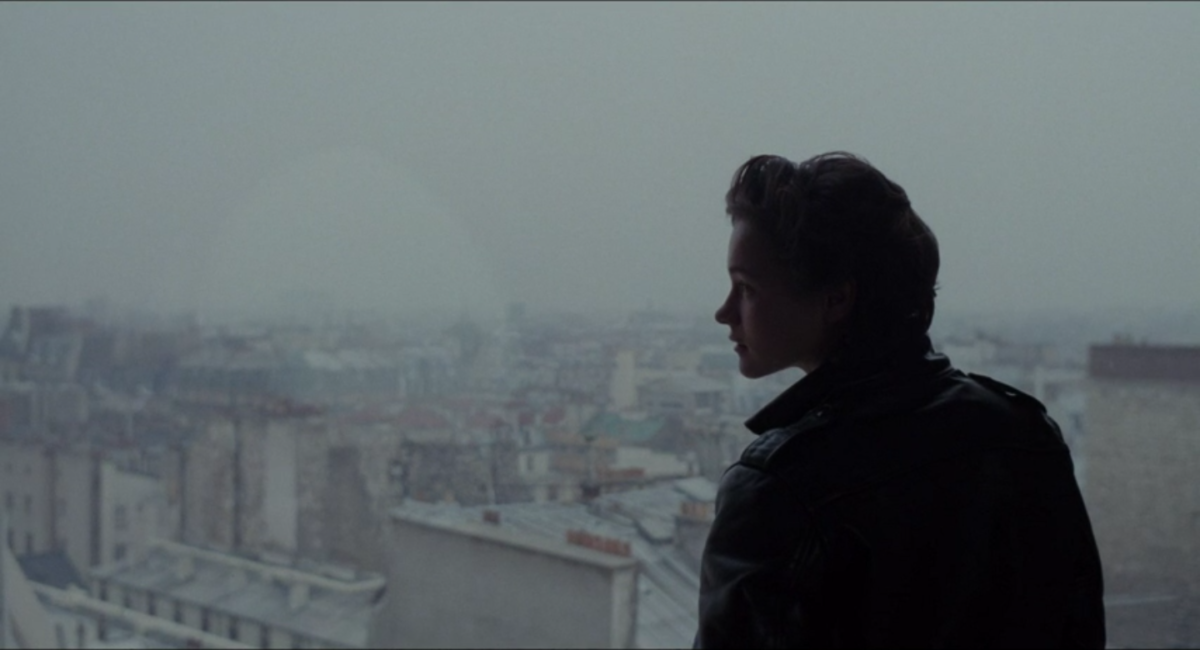
The more Claude becomes conscious of the lying nature of people trapped in money matters, the more frequently she changes her appearance, her identity becoming increasingly ambiguous and elusive, such as not to be preyed upon by the corrupted. At one point, while wearing an inharmonious and ambigendered attire—composed of a flowered printed skirt, a thick turtleneck inside a knitted sweater, topped with a leather jacket—Claude angrily tells her lover: “I don’t want to let myself be destroyed.” Through her character, Rivette breaks with conventional story structures, like when a heterosexual couple comes together after a succession of events. Rather, the viewers witness female solidarity through actions aimed at protecting Cécile from her state of isolation, imposed by someone exterior to the group. On many occasions the girls try to interact with a guarded and avoidant Cécile and follow her to discover the real identity of her boyfriend. Joyce, for instance, while being known as the most protective and down to earth of the four, sooner or later commits an irreparable act that sends her to prison.
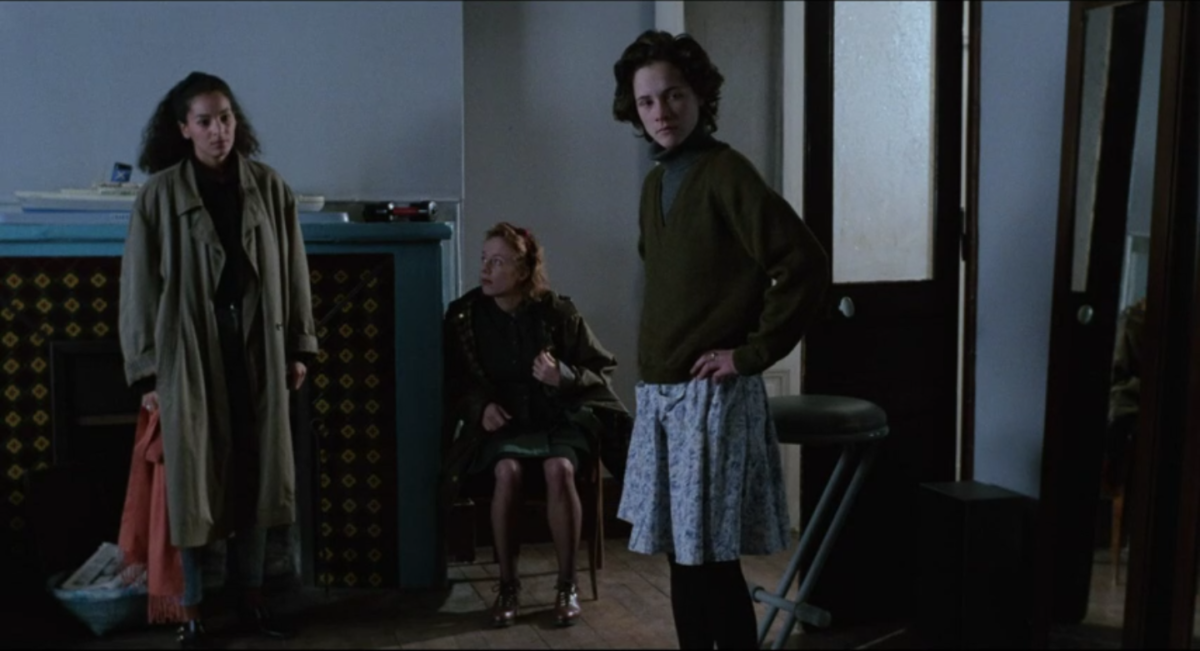
While in Balzac’s novels money is the framework that allows upward or downward social mobility, it is important to note that Rivette invites the spectator to a universe in which women protect one another from the vice and violence brought by material and self-serving interests. In short stories like La Fille aux yeux d’or (1833) and La Duchesse de Langeais (1834), characters like Henri de Marsay and Armand de Montriveau belong to a secret society which Balzac associates to the old tradition of Companionisn, whereby an elitist group of men with similar values and a common goal engage in criminal activities to overthrow the law and compete with God. These men, who appear under the name of the Thirteen in Balzac’s Comédie and become the main thread of Rivette’s Out 1: noli me tangere, orient all their efforts to increase their political power by reaching the highest ranks of Parisian society. By contrast, the gang of four is a small sisterhood that is not particularly interested in climbing the social ladder but dedicates its time to acting, which they all assimilate to “a search for the truth”. For this reason, they unanimously attend Constance’s drama class, a comedian and teacher who they revere as their most prestigious mentor.
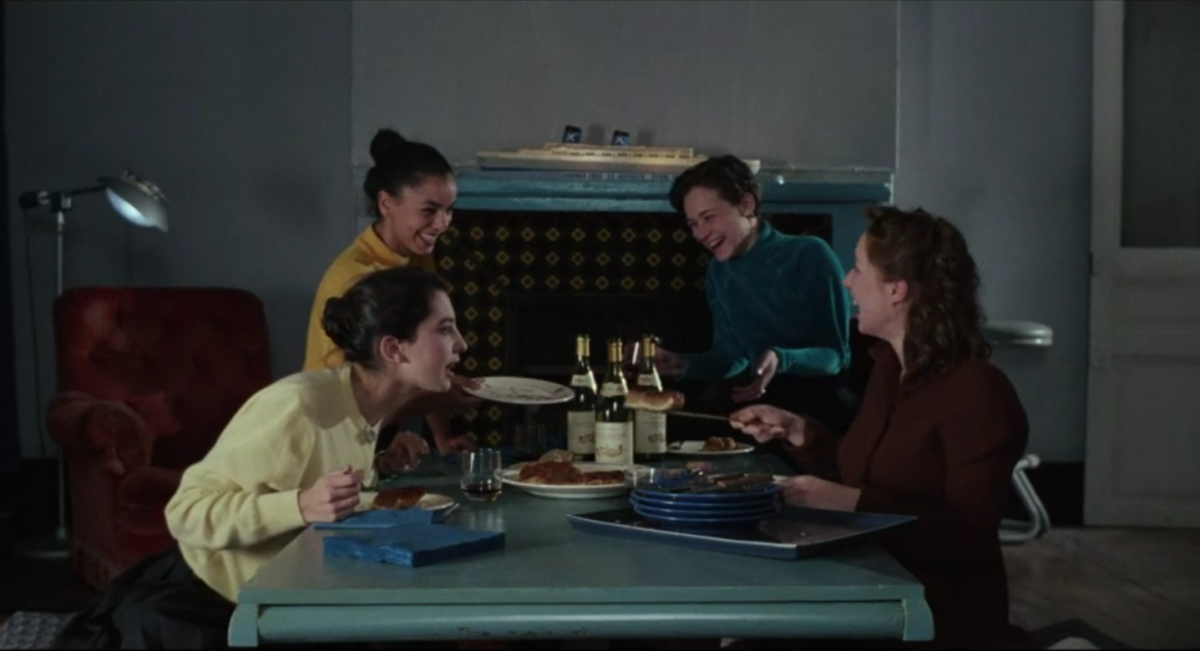
Surely, the acting space Constance has founded in the middle of Paris is propitious to the artistic development of her troupe, since she recommends her students to leave all their personal problems, no matter how serious, at the door of the auditorium. Over the course of the lessons, we realise that her students get more and more confused as to Constance’s educational methods and message. When the latter scolds Corrine, another one of their classmates whose acting she considers bad, the girl gets upset and replies: “Sometimes you criticise my diction; sometimes my emotions… I no longer understand what you want from me.” In a manner reminiscent of Frenhofer when philosophising about art, Constance states what she considers obvious: “I want everything.” In other words, the comedians are asked to “feel” the words of Marivaux, not to express their own feelings of love and sadness or feign emotions. Constance’s idealism, nonetheless, comes up against a central problem: reality. Raphaelle, Corrine, Cécile and others students are either repetitively late, abandon or fail to attend the class due to external reasons, which the spectator never fully understands. The feeling of distress that Cécile’s acting expresses is revealing of the difficulties she is going through to find the money to pay for her drama course. Ironically, Constance’s teaching style aims to emancipate the troupe from customary acting conventions by encouraging them to create their own playful rules. However, she doesn’t seem to pay much attention to the fact that the precariousness in which some of her pupils find themselves is directly related to her own philosophy; one that excludes anyone who does not possess sufficient wealth to create freely.
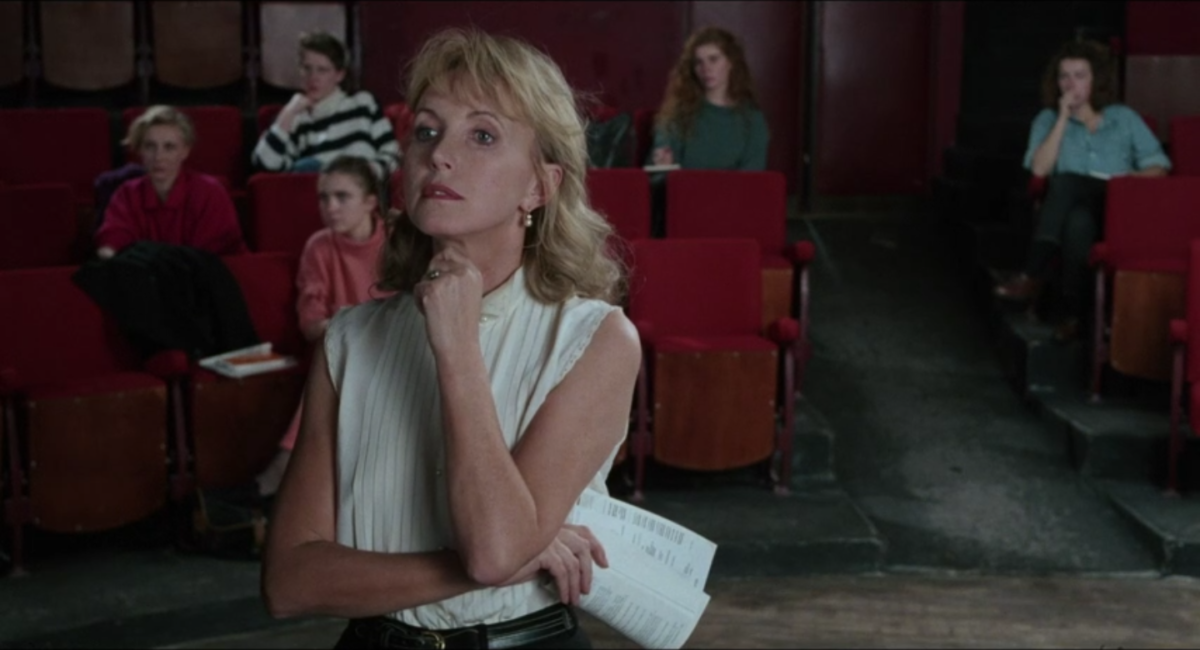
To conclude, Rivette understood French society as irremediably corrupted, probably due to the dictatorship of money. Since Paris Belongs to Us (1960) he never stopped alluding to unlawful activities and machinations that exist in the capital’s intermediate spaces. However, as suggested through this improved, feminised and modernised version of the Companions of Duty, he also believed in unity, either as a group of individuals who come together around a common set of ideals, or as an aesthetic concept, through films that provide the impression of a totality, of a “sum”. You may want to ask: “it’s all very well, but I still do not understand why the title refers to four girls, when there are actually five of them: Cécile, Anna, Joyce, Claude and Lucia.” Sure, some people might think it’s only a case of bad math… I personally imagine it as a mirroring of another gang of four, which emerged in the 1950s: it included François (Truffaut), Éric (Rohmer), Jacques (Rivette), Jean-Luc (Godard) and Claude (Chabrol).
You still don’t get it? Then allow me to cite, for the last time, Buller Ogier: “If we don’t feel the situation, we see nothing.”
